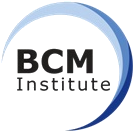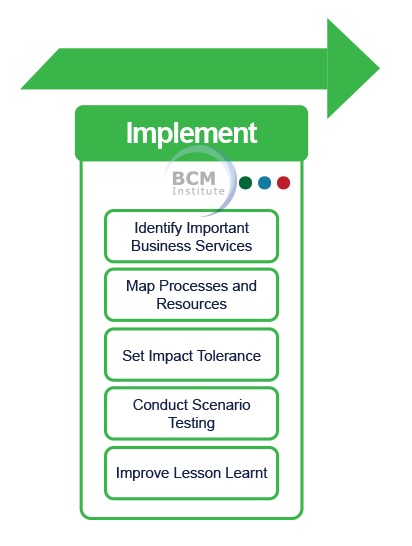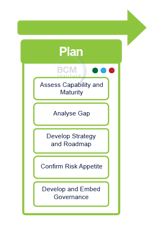
Develop the Communication Strategy
|

|
What is a Communication Strategy?
A communication strategy is a guide or a plan that helps an organization share information and achieve its communication and business objectives. In this case, the operational resilience initiative.
Ensuring effective and timely communication of the internal and external communication plans is essential to help the organization keep customers and other stakeholders informed.
|

 This section is the "Sustain" phase of the Operational Resilience Planning Methodology. It is the second stage of the Sustain phase: Develop the Communication Strategy.
This section is the "Sustain" phase of the Operational Resilience Planning Methodology. It is the second stage of the Sustain phase: Develop the Communication Strategy.
Audit Checklist for Developing the Communication Strategy
1. Stakeholder Identification
|
- Have key stakeholders for operational resilience been identified?
- Is there a clear understanding of each stakeholder group's communication needs and expectations?
- Have internal and external stakeholders, including employees, customers, suppliers, and regulators, been considered?
- Is there a process to regularly review and update the stakeholder list and their communication requirements?
|
| Checklist |
- Review the documentation of stakeholder identification for operational resilience.
- Assess the clarity and completeness of understanding each stakeholder group's communication needs and expectations.
- Verify that both internal and external stakeholders have been considered.
- Determine the existence of a process for regular review and update of the stakeholder list and their communication requirements.
|
2. Communication Objectives and Key Messages
|
- Have communication objectives for operational resilience been defined?
- Are there clear and concise key messages that must be communicated to stakeholders?
- Do the key messages align with the operational resilience goals and priorities?
- Is there a process to regularly review and update the communication objectives and key messages?
|
3. Communication Channels and Tools
|
- Are there appropriate communication channels to reach each stakeholder group effectively?
- Have the advantages and limitations of different communication channels been considered?
- Is there a mix of channels, including both traditional and digital, to ensure comprehensive communication?
- Are there tools and platforms in place to facilitate efficient and secure communication?
|
| Checklist |
- Assess the availability and suitability of communication channels for each stakeholder group.
- Evaluate the advantages and limitations of different communication channels.
- Verify the presence of a mix of traditional and digital channels for comprehensive communication.
- Determine the availability and effectiveness of tools and platforms for efficient and secure communication.
|
4. Communication Plan Development
|
- Is there a documented communication plan for operational resilience?
- Does the communication plan include a timeline, responsibilities, and deliverables?
- Are there mechanisms to ensure timely and consistent communication?
- Are there processes in place to handle urgent and sensitive communications?
|
| Checklist |
- Review the documentation of the communication plan for operational resilience.
- Evaluate the inclusion of a timeline, responsibilities, and deliverables in the communication plan.
- Verify the existence of mechanisms to ensure timely and consistent communication.
- Determine the presence of processes to handle urgent and sensitive communications.
|
5. Measurement and Evaluation
|
- Is there a process to measure and evaluate the effectiveness of communication activities?
- Are there metrics and performance indicators to assess the impact of communication efforts?
- Is feedback from stakeholders collected and analyzed to identify areas for improvement?
- Are there mechanisms to monitor and address misconceptions or misinformation?
|
| Checklist |
- Assess the existence of a process to measure and evaluate the effectiveness of communication activities.
- Evaluate the availability of metrics and performance indicators to assess the impact of communication efforts.
- Verify the collection and analysis of stakeholder feedback to identify improvement areas.
- Determine the presence of mechanisms to monitor and address misconceptions or misinformation.
|
Do note that some steps may overlap or appear similar in the other stages of the OR planning phases. If this occurs, the questionnaires and checklists must be contextualised to the topic under review.
More Information About Blended Learning Operational Resilience Audit (ORA) Courses
BCM Institute offers two levels of OR auditing courses: ORA-3 Blended Learning ORA-300 Operational Resilience Audit Specialist and the ORA-5 Blended Learning ORA-5000 Operational Resilience Audit Expert.
 |
 |
 |
 |
 |
 |
 |
![Email to Sales Team [BCM Institute]](https://no-cache.hubspot.com/cta/default/3893111/3c53daeb-2836-4843-b0e0-645baee2ab9e.png) |
 |
 |
Please feel free to send us a note if you have any questions. |
 |

 This section is the "Sustain" phase of the Operational Resilience Planning Methodology. It is the second stage of the Sustain phase: Develop the Communication Strategy.
This section is the "Sustain" phase of the Operational Resilience Planning Methodology. It is the second stage of the Sustain phase: Develop the Communication Strategy.


![OR [Sustain] Questionnaires: Implement Training and Awareness](https://no-cache.hubspot.com/cta/default/3893111/f9696683-cec5-4914-ac3b-48962d7f5f9e.png)












![Email to Sales Team [BCM Institute]](https://no-cache.hubspot.com/cta/default/3893111/3c53daeb-2836-4843-b0e0-645baee2ab9e.png)


























